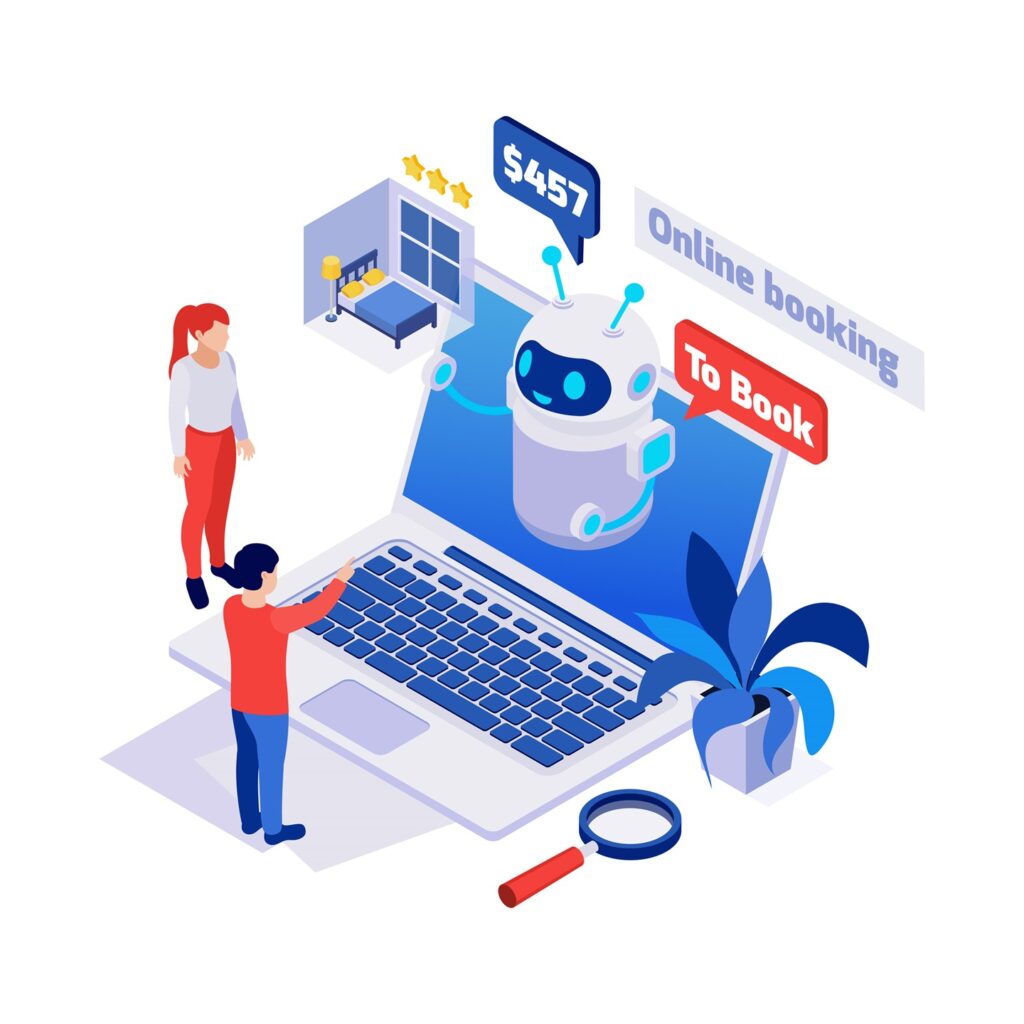AI at Your Service: Transforming Customer Experiences Across Industries

When scrolling on a website looking for a product, how often do you find an automatic chatbot in the righthand corner ready to help? How often do you find a new playlist customized just for you on your favorite music platform? Various industries in our lives, whether it be retail, finance, or hospitality, have slowly begun to adapt AI to customer experiences to provide faster services and increase profit.
Here are some ways that these businesses are deciding to go about it:
Chatbots
Chatbots are used in a wide variety of businesses and institutions to increase response time, assist with basic tasks, and maintain user satisfaction. One study has shown that chatbots can increase a business’s profit by 30% due to their fast response time, helping customers with returns and exchanges on their website. With 53% of customers indicating that speed is a key factor in determining whether they revisit a business or not, chatbots are being used widely to quickly satisfy customers by answering questions, making returns, and providing information.
Chatbots’ involvement in company logistics boosts business profits and creates more time for workers to emphasize more complicated tasks. For example, the Bank of America created an AI chatbot named Erica that can assist customers in making transactions and considering financial options. As a result, Erica has completed more than 330 million requests in just under six months, allowing Bank of America to focus its efforts on other customer service experiences.
Recommendation Engines
Recommendation Engines are systems that businesses utilize to suggest products or services for customers based on their past purchases.
Whenever Spotify creates a new playlist for you or YouTube suggests a new video for you to watch, recommendation engines are at work. They are proven to increase business engagement by recommending more products or things to use, prompting customers to spend more. However, it’s important to note that recommendation engines can only be helpful if customer data is accurate and abundant—without this factor, it is much harder to determine preferences and, therefore, deplete customer experience. Despite this slight caveat, there are many examples in which companies have used recommendation engines as a basis for profit: for example, Amazon uses recommendation engines to drive 35% of its eCommerce profit, while Netflix gains a billion dollars a year from recommending shows, movies, and documentaries to members. Each business has unique and evolving customer service preferences that recommendation engines can improve, allowing them to flourish.
Predictive Analytics
Companies use predictive analytics to understand customer behavior while also estimating how these preferences may change in the future. This artificial intelligence system is incredibly useful in determining how trends and certain products will emerge in the upcoming months based on customers’ past experiences.
Not only that, but it also anticipates customer needs and troubleshoots potential solutions when companies meet a problem. In hospitality, predictive analytics is used to determine the business’s staff numbers as well as how many roles should be created to create the most efficient service possible while also preventing overstaffing. In marketing, predictive analytics is used to observe how customers will respond to advertisements, commercials, and products based on past reactions. It allows various corporations to cater to customer needs at a faster speed. Having these analytics will enable companies to save money and avoid disasters, but only if the right data is being used.
Conclusion
Through chatbots, recommendation engines, and predictive analytics, businesses around the world can create a better customer experience. Being able to predict and recommend what customers like to see efficiently cuts down on wasted resources while also gaining profit and recognition. Artificial intelligence within the customer experience is rapidly changing how customers interact with companies, and it is sure to last long into the future.



